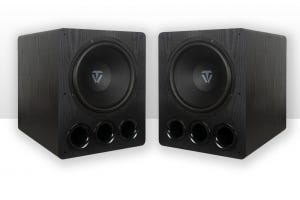

Wondering how you can ensure you are ready for the new technology you may want to adopt in the future? In short, you will need cables, cables and more cables! To make sure you're ready, you should speak to an expert in home theatre and networking who can communicate your ideas to your electrician. Spend some time thinking about what you want your house to do. Just as you would do a lighting plan determining where each light will be fitted, you will need to determine where you want to install your speakers and devices etc . It can’t be suggested strongly enough that taking your plans to an expert will ensure more satisfying results.
You’ll be surprised how many things you need to think of when planning. The common items you will need to think about include your television, DVD & Blu-ray player, amplifier/receiver, speakers, telephones, computers and home alarm system. Don’t forget the kitchen. There is a growing range of fridges on the market that can allow internet access via a huge touch screen on the front. You can watch TV, listen to music and even work out what to order online to restock the thing! All this via either a network port or a phone line, depending on the fridge. For this reason you would be wise to link up the kitchen into your plans with both a Cat5/6 and a phone line.
You may decide to turn your lounge into a home theatre in a couple of years, so make sure you have cable running through the ceiling ready to install your projector. Include things on your list that you may not even have yet, and may not have for years. Do you or might you have children in the future? Will they need internet or tv in their bedrooms. Yes there’s wireless, but for reliable connection, nothing beats cable to the wall, especially in double story homes. If you think you may need it or even if you’re not sure, it is so much easier to install the cable at frame stage rather than punch holes in walls in the future. It will also save you money in the long run, as you won’t have to get your electrician back over and over as your needs expand.
(cables running to a central location)
The industry standard at the moment is to use cat5e/6 cabling for everything including sending HDMI signal. You need to remember that it takes two ruins of cat 5 to send HDMI. There are four common colours that Cat5/6 leads come in, take the time to colour code your runs as there will be so many by the end it can be a bit hard to find one lead in a sea of blue. If you are doing it yourself it’s also recommended to tape a clear and obvious number to the end of each lead. This makes it a lot easier when you are trying to decipher the spaghetti and where it’s heading.
With all these cables running behind your walls, it’s easy to get confused. It’s important to finish off the connection properly. Installing wallplates at each point will ensure a really neat and professional finish. There are dozens of styles of wallplates available to suit your individual application. (Check out our blog on wallplates)Then when you are ready to add something new, all you need to do is plug it in and connect your cable to the wallplate.
If you are planning on wall mounting your TV’s, you’ll want to get a power point set right behind where you want the TV. The cable wallplates would be next to this so when the TV is up, you guessed it, no visible leads!
We like the idea of a server running the entire home theatre. This way you have a “brains” of the home theatre located out of sight and lots of signals running from this to each “hub” or TV. The main benefit of this is that you can access everything on your hard drive from any TV or computer in the house. Your children’s movies can be stored on the server so you don’t have to put separate DVD players in each bedroom and don’t have to worry about DVD’s getting lost or damaged. All your music can be accessed from which ever room you are in. It allows for a much more flexible home space.
So how do you control this system? The server and brains of the system look just like a normal home theatre setup and computer and work just like normal. The difference is that they can also be accessed from any other hub in the house as well.
One other thing; you’ll need a pre-programmed remote control for each room so that the system can be controlled from any room. The Logitech Harmony remotes are great because you can program them on the computer and just plug them in via USB to update them. It means that no matter what room you are in the remote will be the same easy one to use.
One last thing. Before you put the gyprock up, after you’ve done all the cabling please take the time to photograph every single wall that is wired. There is nothing more frustrating than trying to find one lead in thousands and not being able to remember where it is in the wall and patching search holes in a wall is neither fun nor time well spent!
Although this sounds like something from the future, this really is possible in any house. In fact, this is just the start of what you can do!
If you would like advice on future proofing your home, please call the Selby Techs on 1800 69 2225







